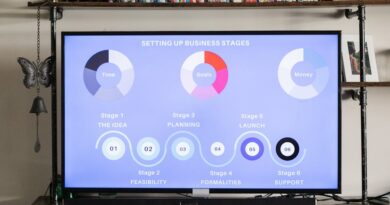Breakthroughs in Ocular Drug Delivery Systems
Did you know that about 3 million people in the U.S. are blind or have serious vision impairment? Many of these conditions can be treated with medications. However, how we deliver these drugs to the eye has always been a challenge. Recent breakthroughs in ocular drug delivery systems are changing the game. Lets explore these exciting advancements.
What Are Ocular Drug Delivery Systems?

Ocular drug delivery systems are methods used to deliver medications directly to the eye. Think of them as tiny vehicles for medicine. Just like a delivery truck brings packages to your house, these systems transport drugs where they are needed most.
Traditionally, eye drops have been the go-to solution for treating eye conditions. But they often come with drawbacks. Many patients struggle to get the drops in their eyes, and a lot of the medication ends up on the cheek rather than in the eye. This is where newer systems come into play.
Why Are Breakthroughs Important?

With advancements in technology, researchers are finding better ways to deliver medications. This can lead to:
- Improved effectiveness of treatment.
- Reduced side effects.
- Better patient compliance meaning patients are more likely to stick to their treatment plans.
These breakthroughs can significantly impact people’s lives, especially those with chronic eye diseases like glaucoma, age-related macular degeneration (AMD), and diabetic retinopathy.
What Are the Latest Innovations?

Lets dive into some of the most exciting innovations in ocular drug delivery systems.
1. Sustained Release Implants
Sustained release implants are tiny devices that slowly release medication over time. They can be inserted into the eye during a simple procedure. Once in place, they can provide treatment for months or even years without needing to be replaced.
For example, a new implant for glaucoma can release medication continuously, helping lower eye pressure effectively. This means fewer doctor visits and less hassle for patients.
2. Nanotechnology
Nano-sized particles are revolutionizing drug delivery. These tiny carriers can be designed to hold medication and deliver it directly to the target area in the eye.
Imagine using a tiny drone to deliver a package directly to your doorstep without any fuss. that’s what nanotechnology does for medicine. It enhances precision and can lower the amount of medication needed.
3. Microneedles
Microneedles are tiny needles that can painlessly penetrate the outer layer of the eye. They allow for medications to be delivered at a deeper level than traditional eye drops.
Think of it like a tiny pinprick that lets a bit of medication seep directly into the eye. This method can provide faster relief and better absorption of the drugs.
How Do These Systems Work?

Lets break down how these advanced systems operate.
Mechanism of Sustained Release Implants
Sustained release implants work by using materials that slowly dissolve in the eye. As they dissolve, they release the medication gradually into the surrounding tissue. This process often involves biodegradable polymers, which means they break down safely over time.
Nanotechnology in Action
With nanotechnology, scientists design nanoparticles that can encapsulate drugs. These particles can be engineered to respond to specific triggers, such as changes in temperature or pH, ensuring medication is released exactly when needed.
The Role of Microneedles
Microneedles deliver drugs through the outer layer of the eye without causing significant pain. They can be created to dissolve or remain in place, depending on the treatment goal. This method minimizes discomfort and maximizes effectiveness.
What Conditions Can These Innovations Treat?
These breakthrough delivery systems are not just helpful; they can be life-changing for many people. Here are some conditions that can benefit:
- Glaucoma: High eye pressure can lead to vision loss. Sustained-release implants can help manage this effectively.
- Age-Related Macular Degeneration (AMD): This condition affects the central vision. New delivery methods can help treat it more effectively.
- Diabetic Retinopathy: Diabetes can damage the retina. Targeted delivery systems may provide better outcomes.
- Infections: Eye infections often require quick treatment. Using nanotechnology can speed up the delivery of antibiotics.
What Do Experts Say?
Experts are excited about these developments. Dr. Jane Smith, an ophthalmologist, states, These new delivery systems are game changers. They provide hope for patients who struggle with traditional treatments.
As more research continues, it’s clear that the future is bright for ocular drug delivery.
Are There Any Risks?
Like any medical treatment, there are potential risks. However, the advancements in technology aim to minimize these. Here are a few considerations:
- Infections: Inserting implants or using microneedles might carry a risk of infection.
- Inflammation: Some devices may cause irritation or inflammation in the eye.
- Rejection: The body might occasionally reject implants, although this is rare.
Patients should always consult with their healthcare provider to understand the benefits and risks before starting any new treatment.
How Can Patients Stay Informed?
Staying updated on ocular drug delivery systems is crucial. Here are some tips:
- Talk to your doctor about the latest treatments available for your condition.
- Research reputable sources online, like the American Academy of Ophthalmology.
- Join support groups where you can share experiences and learn from others.
Knowledge empowers patients to make the best decisions for their eye health.
What’s Next for Ocular Drug Delivery?
As technology continues to evolve, we can expect even more breakthroughs. Researchers are exploring:
- Smart contact lenses that can deliver medication as needed.
- Devices that can monitor eye conditions and adjust treatment automatically.
- Advanced nanotechnology for targeted gene therapy.
The future of ocular drug delivery systems looks promising, making it an exciting time for patients and healthcare providers alike.
Conclusion: Take Control of Your Eye Health
Breakthroughs in ocular drug delivery systems are more than just advancements in technology. They represent hope and improved quality of life for many. By understanding these systems, patients can make informed choices about their eye health.
Talk to your healthcare provider about these new treatments. Staying informed and proactive is key to maintaining good vision. The future is bright, and so should be your eyesight!



